Our plant doctors Radko Tichavshy, Mark Moodie and Pawan Singhania weigh in on your plant problems.
Radko TIchavsky Mark Moodie Pawan Singhania
Radko Tichavsky is a Czech born Mexican Agrohomeopath. He is a co-founder and director of Instituto Comenius in Mexico and author of Handbook of Agrohomeopathy, 2007 (Spanish) and Homeopathy for Plants, 2009 (Spanish) and creator and teacher of Holohomeopathy. http://icomenius.edu.mx/index1034.php?lang=esp El 04/12/2014, a las 15:36, Radko Tichavsky [email protected]
Mark Moodie hosts the website Considera which provides a growing M.M and Repertory for plants and discusses resources for biodynamics and Agrohomeopathy The website allows the world community to contribute their experiences in planting.
Agrohomeopathy Course!
Radko Tichavskyi is now offering a one semester virtual course in Agrohomeopathy (in English). You can learn how to define and analyze holons and how to repertorize the specific homeopathic treatment beyond just disease or pest names. You can find out more here: www.icomenius.edu.mx
A Practical Course in Homeopathy for Chickens – Instructor: Radko Tichavsky
Date: May 10-13- 2016 (total 30 hours)
Place: Centro de Formacao de agricultores de Cangucu RS/ Brasil, Organizers: CETAC-EMATER, EMBRAPA, Instituto Federal de Educacao Ciencia e Tecnologia, Instituto Comenius and Avicultura colonial
Contact: [email protected]
tel.: 53-32522328
Language: Spanish with translation to Portuguese
Dear plant Doctor,
I have an Ilex meserveae plant BLUE PRINCE (15 year old plant). Since last year my Ilex has a problem (See photos below). The problem started after that wet year of 2014. I have not seen any insects on the plant. We do not use any insecticides in our garden. Is there something I could do to save this wonderful plant?
Location and Climate
This plant is growing outdoors. We are located in Sofia, the capital and largest city of Bulgaria. It’s the centre of the Balkan Peninsula, midway between the Black Sea and the Adriatic Sea. Sofia has a humid continental climate (Köppen climate classification Dfb) with an average annual temperature of 10.6 °C (51.1 °F). Winters are cold and snowy. In the coldest days temperatures can drop below −15 °C (5 °F), most notably in January. The lowest recorded temperature is −28.3 °C (−19 °F) (January 24, 1942). On average, Sofia receives a total snowfall of 98 cm (38.6 in) and 60 days with snow cover. Summers are warm and sunny. In summer, the city generally remains slightly cooler than other parts of Bulgaria, due to its higher altitude. However, the city is also subjected to heat waves with high temperatures reaching or exceeding 35 °C (95 °F) in the hottest days, particularly in July and August. Springs and autumns in Sofia are relatively short with variable and dynamic weather. The city receives an average precipitation of 581.8 mm (22.91 in) a year, reaching its peak in late spring and early summer. The wettest recorded year was 2014 with a total precipitation of 1,066.6 mm (41.99 in).
Back of leaf
Thank you
Galina Vangelova
Bulgaria, Sofia
Radko Tichavsky: Dear Galina,
The plant Ilex sp. in the photo has symptoms of the affection “scale”, combined with some fungi as a secondary infection, probably due to climate stress or environmental pollution. The remedies for this problem are Ruta graveolens 6 CH alternating with Vanilla 6 CH sprayed under the leaves. You can also apply Lavandula 6 CH and Persea sperm 6 CH (homeopathic remedy made from avocado seed). On the soil under the tree you can add some coffee residue. This adds chlorogenic acid which is very important in the metabolic pathways of this plant and it also corrects the pH and acidifies the soil.
Dear Mr. Tichavsky,
I have five thousand pomegranate plants on 9 acres, They are 3 months old and I want to develop them organically and Photochemically. There is no disease as of now. I want to protect them from insects so I need guidance on homoeopathic “pesticides”. My 9 acres farm is 35 kilometres from Ajanta Caves in Aurangabad, Maharashtra, India. The temperature is between 30 to 40 in summer. I am really a fan of homoeopathic remedies, and this is the first time I want to experiment on the plants. Kindly guide on the standard doses and application.
Thank you
Dinesh Thakur
Radko Tichavsky: Dear Dinesh Thakur,
The first consideration has to be the density of planting of pomegranate. It should be planted in space 6×4 meters and 4×2 meters as the maximum. Higher density will result in multiplication of insects who find in the dense foliage and under low wind access to excellent shelter. The basic sequence of application of homeopathy in crop soil is Nosode 6 CH, Sulphur 6 CH, complex of Calcarea 6 CH (Calcarea carbonica, Calcarea phosphorica and Calcarea fluorica) and then Natrium muriaticum 6 CH.
The most immediate remedies are usually found in the form of spontaneous plants under their trees. That is why it is so important to maintain a good mulching and good biodiversity of native plants at each holon. The dose of homeopathy depends on the density of foliage and plant type (trees, shrubs or plants). The amount of homeopathic preparation is approximately 500-1000 liters per hectare. But much will depend on it being applied on the soil and on the foliage also. It is very important to apply homeopathy through microspraying; after the liquid leaves the spray, it is dispersed by fans. This is the most effective way that homeopathy actually reaches all parts of the plant. Preferably the homeopathic remedy should be applied in the afternoon, when the rays sun decrease their intensity, and some times with adjuvants for example baba of Opuntia ficus-indica or of Aloe vera sap.
Dear Plant Doctor,
I am from Maharashtra. How can I prepare tincture from Casuriana tree to overcome fungal diseases? What is application rate per acre for grape farm.
Thank you
Aniruddha Patil
Radko Tichavsky: Dear Aniruddha Patil,
The Casuarina tincture is prepared with half the volume of leaves and young branches and half the volume of ethyl alcohol 30%. You let it sit for a week for the maturation in closed amber bottles in a cool, dark place, and then proceed to dynamization to the desired potency. The dose depends on the type of sprayer you use, such as if have a microsprayer with fans (you can improvise one and make a very fine mist), or if you apply the homeopathy in an irrigation system, and also it also depends on the density of the plants. In grape crops with medium density a sufficient average microsprayed dose is 500 liters of Casuarina 6 CH per hectare. It is very important to keep mulch on the soil. In this way fungi will be occupied where they should be, ie, decomposing organic material in the soil and will not have the need to conquer new territories in the treetops.
Dear plant doctors,
I have a friend, Ibolya in Brisbane, Australia who doesn’t speak good English so I translate for her. The climate is subtropical and she has Eucalyptus trees in her yard which also drain the moisture. Her tomatoes and beans start to shrivel and then dry up and die. She changed their soil and the same thing happened again. The tomatoes have fruits already but the leaves start to curl. I attach photos of the shriveled, withered leaves. The other problem is with the aphids and ants. They destroy the cucumber and the lemon trees, and basically everything. She doesn’t have ladybugs unfortunately. The lemon trees and the cucumber are also the victims of the caterpillars. The herbs are doing fine.
Can you please suggest possible remedies?
Withered leaves Curled Leaves Aphids
Thank you,
Ibolya and Anett
Radko Tichavsky: Dear Ibolya and Anett,
To form a harmonious holon., crops must be combined so that the plants complement each other and do not compete. The Eucalyptus are a very demanding water species. Actually, this tree dries the soil and spreads around allelopathic1 substances, in this way no more plants grow, only the Eucaliptus species. (1Allelopathy is the chemical inhibition of one plant (or other organism) by another, due to the release into the environment of substances acting as germination or growth inhibitors.)
An excellent combination for tomatoes is to interleave them with basil plants. In this way the two plants protect each other and help each other grow. To balance the holon you must work in principle fairly with the soil; don´t invert the soil strata, but rather apply mulching with a combination of soil nosode at 6 CH. Don´t apply nitrogen fertilizers nor that from animals droppings and use much less synthetic fertilizers, because the excess nitrogen expressed on leaves attracts aphids.
As regards the ants, you can apply a cinnamon tea in microdoses in 1:20 dilution, sprinkled on affected plants, and also spray some oil of mahogany mixed with water. Urtica urens 6 CH can also help. The Ants are highly intelligent beings that live and work under a complex social organization. My suggestion is to offer them something that they like, growing near the anthill. Parallely you can reduce ants population with the help of ducks, as they are excellent scavengers of ants.
Ants work together with aphids (where there are ants you also you find aphids). Ants protect aphids from their enemies for example Coccinella septempunctata (ladybug) and in exchange the aphids secrete a kind of honey which ants collect.
That is, when aphids disappear, ants generally go away and Ladybugs appear. For caterpillars on the limon you can prepare a nosode of caterpillars 6 CH and apply it once a week. Also, you can apply Ricinus communis 6 CH or Azadirachta indica 6 CH.
The symptom on the tomato plants seems to be autogenous necrosis in tomato (AN) autocompatibility reaction of dominant gene (CF) for resistance to fungi Passalora fulva (Cladosporium fulvum) with recessive resistance of gene (ne). This genetic disorder worsens with high temperatures and high light intensity; the yellow spots on the upper side of the leaves will with time necrotize and leaves are turned downward, are dehydrated and eventually die. It decreases tomato fruit production. You can try Staphysagria 30 CH or Chelidonium 6 CH to fix this problem, but a much better plan is to look for other varieties that are resistant to this genetic disorder (for example a more rustic one, a creole variety).

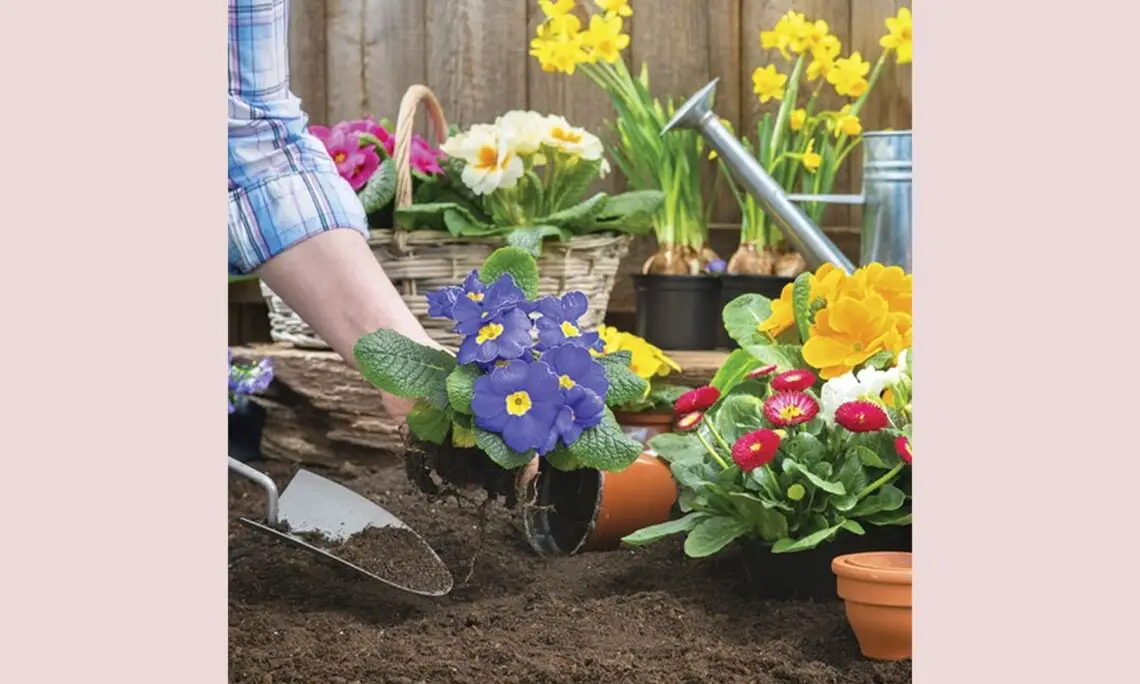



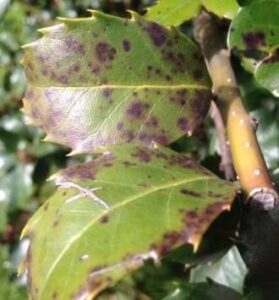
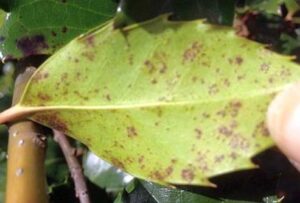
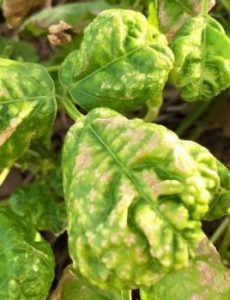
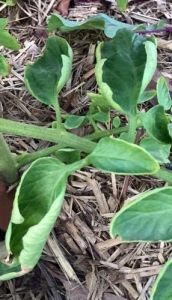
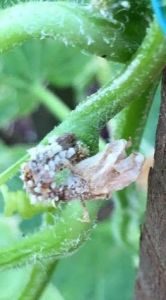



Hello, Galina,
My “ET” means that the plant only needs Belladonna, C200, once 4 pills direct on the soil near the plant. Roses often have similar symptoms (Diplocarpon rosae). In that cases you have the same remedy, Atropa Belladonna.
For Dinesh’s trees I don’t get input, so I think the plants don’t need a remedy at the moment.
Regards from Germany, Sabine